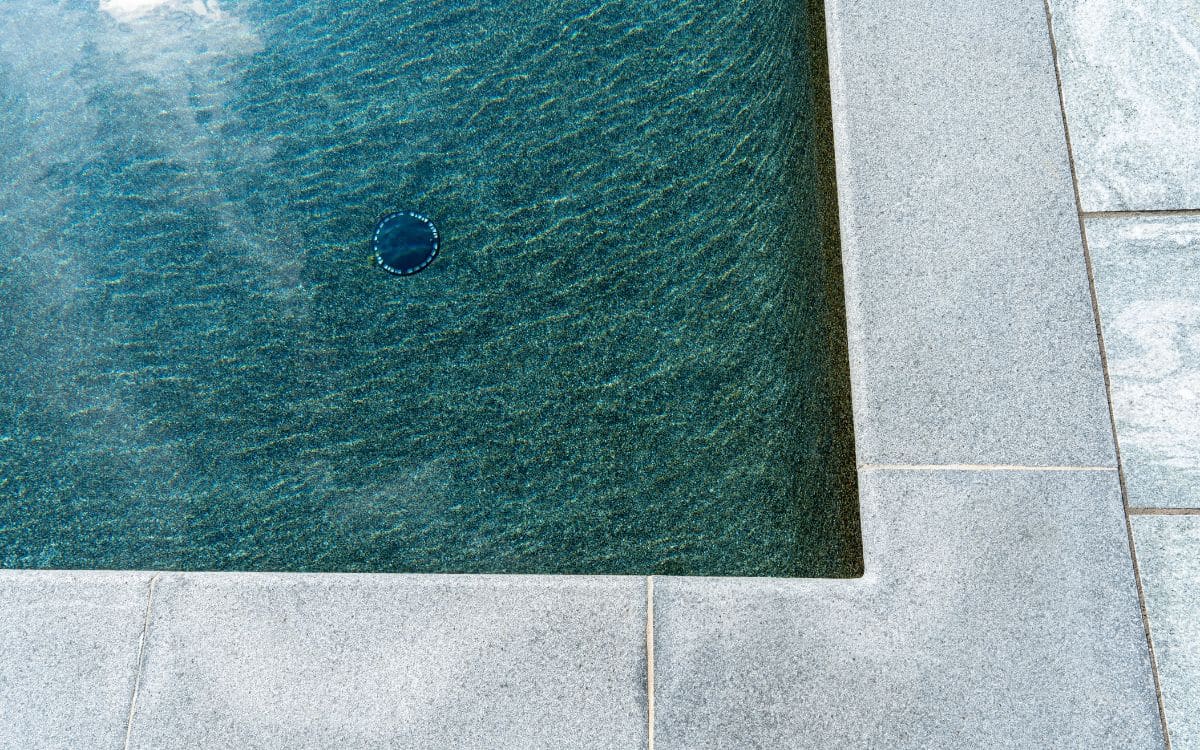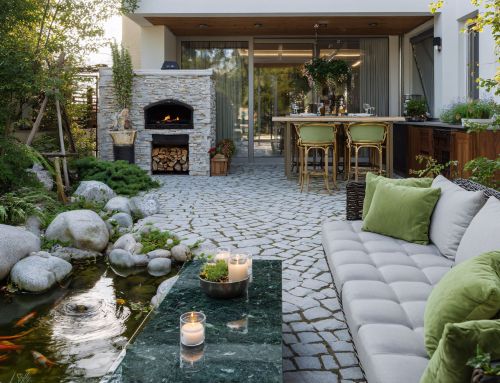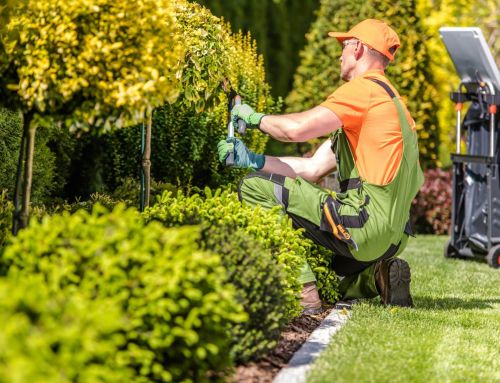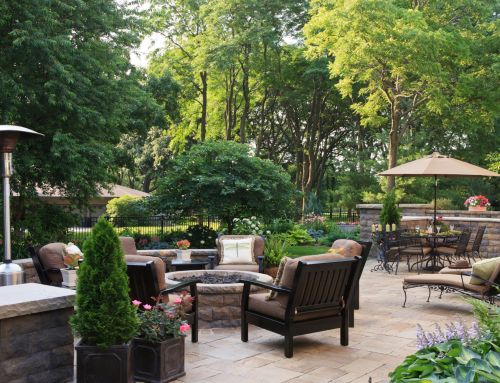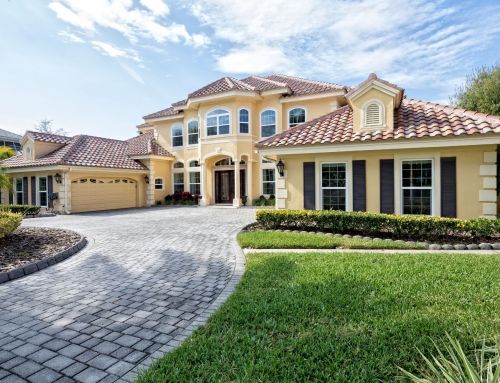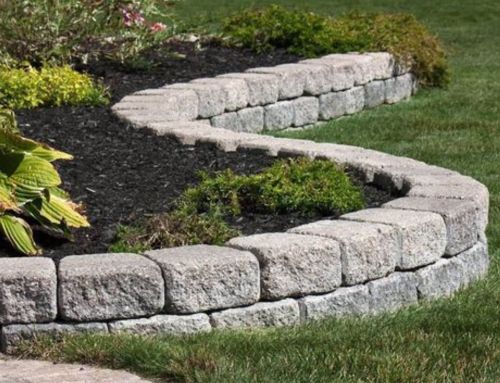Installing a pool is a big investment, but without the right finishing touches, even the most beautiful design can look incomplete. That’s where pool coping & caps come in. These details add a clean, professional finish while also improving safety, drainage, and overall durability.
Pool coping is the trim that surrounds the edge of the pool, creating a smooth transition between the water and the surrounding deck. Wall caps serve a similar purpose for nearby retaining walls or raised features. Choosing the right style and materials helps tie everything together and protects your investment for the long run.
What is Pool Coping and Why Do You Need It?
Pool coping is the material that caps the edge of your pool where the water meets the surrounding deck. This essential element serves multiple critical functions that go far beyond just looking good.
- Protection: Pool coping acts as a shield for your pool’s edges, preventing chips, cracks, and wear caused by weather, chemicals, and regular use. Without it, the structure is more prone to costly damage.
- Safety: Quality coping provides a slip-resistant surface around the pool’s edge, helping to prevent slips and falls, especially important when the area is wet.
- Drainage Management: Properly installed coping directs water away from the pool and surrounding deck, reducing the risk of water pooling that can lead to structural issues or safety concerns.
- Aesthetic Appeal: Coping adds a clean, finished look to your pool. With various materials, colors, and styles available, it enhances the overall design and brings your outdoor space together beautifully.
Types of Pool Coping Edges
Understanding the different edge styles available helps you make an informed decision that matches both your functional needs and design preferences.
Bullnose Coping
Bullnose coping is one of the most popular choices among pool owners. This style features a rounded edge that can vary from a full 180-degree curve to a half-bullnose option. Full bullnose creates a complete C-curve at the water’s edge, providing swimmers with something comfortable to hold onto. Half bullnose offers a flush bottom edge with rounding only at the top, creating a more modern appearance while maintaining comfort.
Cantilevered (Square Edge) Coping
Also known as square edge coping, this style allows for seamless blending between your pool deck surface and the pool edge. It creates a clean, modern look that’s particularly popular in contemporary pool designs. The cantilevered design uses the deck material itself as the finished edge, eliminating visible joints for a sleek appearance.
Chiseled or Rough-Cut Coping
For those seeking a more natural, organic look, chiseled coping uses textured stones that provide an earthy, high-end appearance. This style is often chosen for luxury pools where the goal is to create a natural stone aesthetic that blends seamlessly with landscaping.
Top-Mount (C-Channel) Coping
The most widely used style, top-mount coping, forms a rounded edge that slopes away from the water. This functional design is both comfortable to use and effective at directing water away from the pool area.
Popular Pool Coping Materials
Choosing the right material for your pool coping involves balancing factors like durability, aesthetics, maintenance requirements, and budget.
Natural Stone Options
- Travertine: A top choice for pool coping, travertine offers excellent slip resistance even when wet. It stays cool under sunlight and has a timeless, elegant look. Available in a wide range of colors and finishes, it fits many design styles.
- Limestone: Known for its durability and classic appeal, limestone complements both traditional and modern pools. Its natural color and texture variations add sophistication and visual interest.
- Sandstone: With a textured, organic appearance and strong slip resistance, sandstone is ideal for natural-style pool designs. It also offers good value for those seeking a budget-friendly yet attractive option.
- Granite: Granite delivers unmatched durability and a long-lasting polished finish. Though more costly, it resists wear over time and comes in various colors and textures, requiring minimal maintenance.
Engineered Materials
- Concrete Pavers: A popular choice for their versatility and affordability, concrete pavers can mimic the look of natural stone while offering uniform sizing for easier installation. They are durable and resistant to pool chemicals, making them a practical and stylish option.
- Composite Materials: Engineered specifically for pool environments, composites offer excellent resistance to chlorine, salt water, and UV exposure. While they may have fewer design options than natural stone, they provide long-lasting performance with minimal maintenance.
Traditional Materials
Brick coping offers classic charm and affordability. Brick is naturally resistant to chlorinated water and can be easily repaired or replaced if damaged. It works particularly well with traditional home styles and provides a timeless appearance.
Wall Caps and Pier Caps: Completing Your Pool Area
Wall caps and pier caps complement your pool coping to create a polished, unified look throughout your outdoor space. Wall caps are placed on top of freestanding walls, protecting them from weather damage while adding a decorative touch. Pier caps serve a similar purpose to columns and vertical features, enhancing both style and structure.
To achieve a cohesive design, choose wall and pier cap materials that coordinate with your pool coping. They don’t have to match exactly, but the colors and textures should work well together to maintain a balanced, intentional appearance.
Installation Considerations
While some experienced DIY enthusiasts might consider installing pool coping themselves, this is generally a job best left to professionals. Proper installation requires precision to ensure the coping is level, properly sealed, and adequately addresses drainage requirements.
Professional installation typically involves preparing a level base, applying appropriate adhesives, ensuring proper drainage slopes, and sealing all joints correctly. Mistakes in any of these steps can lead to costly repairs down the road.
If you do choose to tackle installation yourself, be sure to research local building codes, use proper adhesives designed for pool environments, and take time to ensure proper drainage around the pool edge.
Cost Considerations
Pool coping costs vary significantly based on material choice, pool size, and installation complexity. Here’s a general breakdown of costs per linear foot:
- Natural Stone (Travertine, Granite): $40-$60
- Composite Materials: $30-$45
- Concrete Pavers: $20-$30
- Brick: $20-$30
- Basic Concrete: $6-$10
Remember that these prices typically include installation. While natural stone represents a higher upfront investment, it often provides better long-term value through durability and aesthetic appeal that doesn’t go out of style.
Safety and Maintenance
When choosing pool coping, safety should be a top priority. Opt for materials with good slip resistance when wet, and avoid smooth finishes that can become slippery and unsafe around water.
Maintenance needs will vary depending on the material. Natural stone may require sealing, while concrete and composite options are generally lower maintenance. Regardless of type, regular cleaning and routine inspections for cracks or damage can help prevent costly repairs and keep your pool area looking its best.
Making the Right Choice for Your Pool
When selecting pool coping and caps, consider your pool’s design, your home’s architecture, local climate, and how you plan to use the space. Safety is especially important if children will be around, and your budget should account for both installation and long-term maintenance.
The ideal coping choice strikes a balance between function, durability, and visual appeal. It enhances your pool’s look while meeting your practical needs. Taking time to evaluate your options ensures a result that’s both beautiful and built to last.
Conclusion
Pool coping and caps are more than just finishing touches. They play a vital role in the safety, durability, and style of your entire pool area. From protecting your pool’s edges to adding visual cohesion across walls and pillars, the right materials and design choices can elevate your outdoor space from functional to stunning. Whether you prefer the classic look of brick, the elegance of natural stone, or the innovation of composite materials, making thoughtful selections ensures your pool area is both beautiful and built to last.
At Old Station Outdoor & Landscape Supply, we offer a wide selection of premium pool coping, wall caps, and pier caps to suit any design or budget. Our experts can help you find the perfect materials for your project, whether you’re building a new pool or updating an existing one. Visit our showroom in Norton, MA, or contact us today to get started on creating the backyard retreat you’ve always wanted.
FAQs
What is the coping of a pool?
Pool coping is the protective and decorative material that caps the edge of your pool where the water meets the surrounding deck, providing safety, drainage, and aesthetic appeal.
What is the best coping for a pool?
Natural stone like travertine or limestone is considered the best coping for most pools due to its durability, slip resistance, and timeless appearance, though the “best” choice depends on your budget and design preferences.
What are coping stones around a pool?
Coping stones are individual pieces of natural stone (like travertine, granite, or limestone) that are installed around the pool’s perimeter to create a finished edge that protects the pool structure and provides a safe walking surface.
What is pool liner coping?
Pool liner coping is a track system that secures vinyl pool liners in place while providing a finished edge, typically made from aluminum, plastic, or composite materials that clamp the liner and create a platform for installing pavers or stones on top.

